Welcome to Moda Fabrics!
From across the pond...
From across the pond...
England. Great Britain. The UK.
English Paper Piecing.
I love this picture from the Sweetwater Cotton Shop on Instagram - @sweetgirlstudio. They're Aussies - they love EPP.
The first thing most of us probably think of with English Paper Piecing is hexagons - a Grandmother's Flower Garden quilt. Hexagon-based patterns became popular in England in the 1830s and when Godey's Lady's Book published the first hexagon quilt pattern in 1835, it became very popular in "the Colonies". It was often called "English Paper Piecing" because anything British was deemed very elegant.
Even though it's remained popular, it has become very "hip" to EPP. I think there are several reasons for that, not the least of which is the portability of it. (Says someone with a sewing machine that weighs 38 lbs. in it's case.)
Do you EPP? I do... or I have. I really enjoyed it and I'm trying to get back to doing more of it.
Tammy helped. She's been working on this the past month or so, it's one of three she's making for her grandkids. (If I wasn't the same age, I'd probably see if I could get on that list...)
Linzee helped too. At Quilt Market, she told me about a Schoolhouse presentation she'd been to by Diane Gilleland for her new book, All Points Patchwork.
Of course I had to get it and it's one of the best "quilt books" I've bought in years. What I love most about it is that on the second page of the book, Diane states that this is an "idea book" and not a project book. Her goal is to share tricks, tips, ideas and methods, the kind of information we need to create our own designs. By explaining how to draft the pieces and create patterns, she's giving us the freedom to incorporate EPP into designs we already like and use.
I also love that she takes the time to talk about tools - what she uses, what she recommends, and lots of options. Of course I took that as an excuse to raid search the warehouse look through my workroom in search of tools.
Some of the basics - from top left in a roughly clockwise order:
- Good, fine thread. I like Aurifil 50 wt. Neutral thread for stitching pieces together and a brightly contrasting thread for basting is you'll be removing your thread after joining pieces. The bright contrasting color makes it easier to see the thread while removing it.
- Thimbles - hand-sewing with a fine needle... some fingertip protection is in order. Right? Any thimble will do but this Nimble Thimble is my current favorite.
- A seam ripper because yes, pieces do still get sewn together incorrectly. This Clover white seam ripper is my all-time favorite.
- Needles. Diane recommends Sharps for basting and Quilting/Betweens for joining pieces. She also suggests trying different sizes to find the one that works best for you.
- Applique pins - used to secure the paper to the fabric while basting or to pin to pieces together for stitching.
- Wonder Clips - very popular to keep two pieces together while stitching adjoining pieces.
And that's why I love this book - it presents options instead of "this is what you will use and you will love it". I like straw needles - quilting/betweens are too short for my clumsy fingers. Thimbles? I'm trying - really. The Nimble Thimble shown above is nice and I'm getting used to it - slowly. But because I don't like stitching through the paper, I usually do fine with Thimble Pads. (They're always in any stitching kit/bag I have.)
More options:
- Templates. If you like them, use them. I use them because I love being able to cut an entire mini charm pack into hexagons in a minute or two. Then it's just a matter of basting them to the pre-cut papers.
- Hole punch and crochet hook - they make removing the papers a lot easier. I knew about the hole punch but not about the crochet hook. Genius!
- Glue sticks. Even if you'd never glue-baste the edges, a glue stick can be very, very helpful while basting. The Sewline Glue Pens are my favorite but I always have a few Elmer's School Glue Sticks on hand.
- Pre-cut papers. While Diane shows you how to draft your own pieces, she also discusses how to use and combine pre-cut papers to make original designs. Many of the projects in the book were made with Paper Pieces templates and papers.
This is one of my favorite things about English Paper Piecing, the back of the quilt is almost better than the front.
Okay, now that I have the tools, I'm going to make this...
Lucy Boston - the Patchwork of the Crosses by Linda Franz.
Or not. I love the quilt, it's an "eventually" project. I know I'm going to be tempted though, a friend has half of her blocks done and it's quite wonderful. While the quilt and book have been popular since it was published a few years ago, it seems like more and more quilters are diving in every day.
The variety of fabrics being used is amazing - it's not just for Reproduction fabrics. Bonnie & Camille?
This is by Kylie Seldon - @ThreeHoneyBees on Instagram.
The best thing about designs that work well for English Paper Piecing is that they can be found anywhere. A book I've had on my work table for a few weeks is Hexagons, Diamonds, Triangles and More by Kelly Ashton.
It's billed as a skill-builder with techniques for 60-degree patchwork by hand or machine, and all of the designs could be done with English Paper Piecing. Paper Pieces has the pre-cut papers in the shapes required to make all three of these blocks.
The funniest part of all this is that this all comes back to geometry. Another one of those subjects I avoided in school because I was never ever going to need it or use it in my lifetime. Given what I do for my work and hobby, I find that just a wee bit ironic.
So do you do English Paper Piecing? Do you have any tips or tricks to suggest?
Have a terrific weekend!

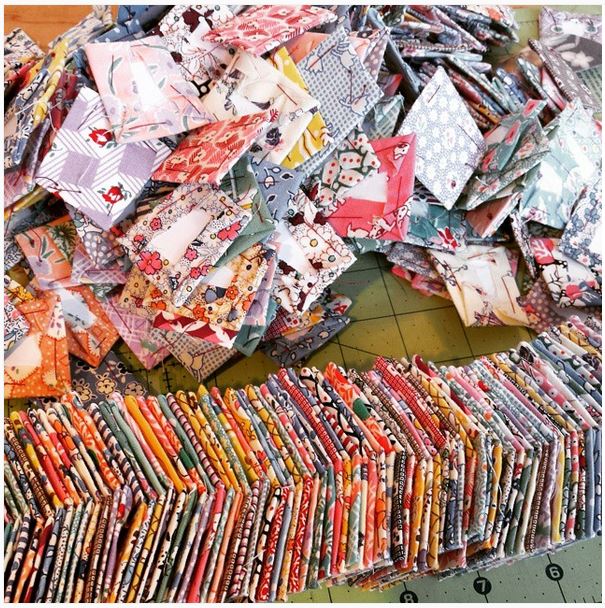
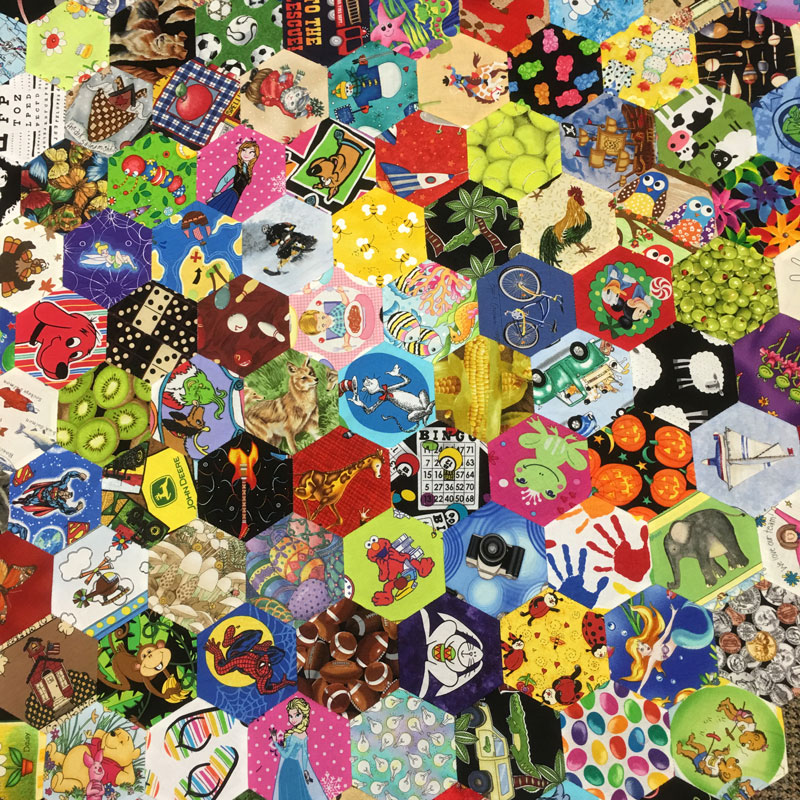
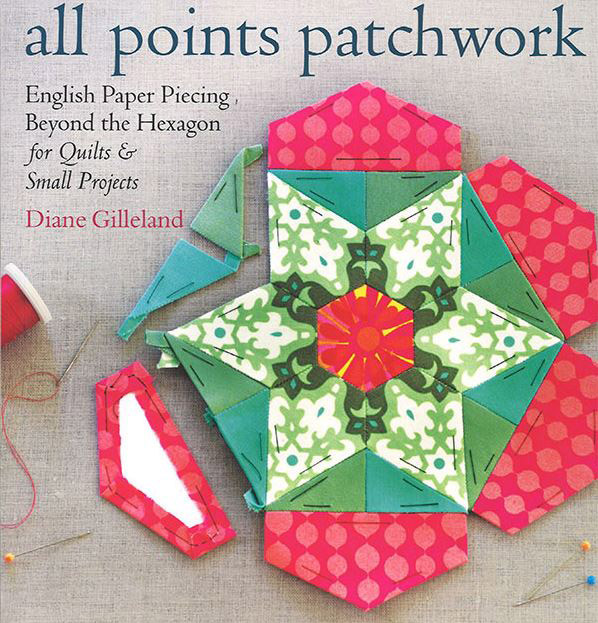


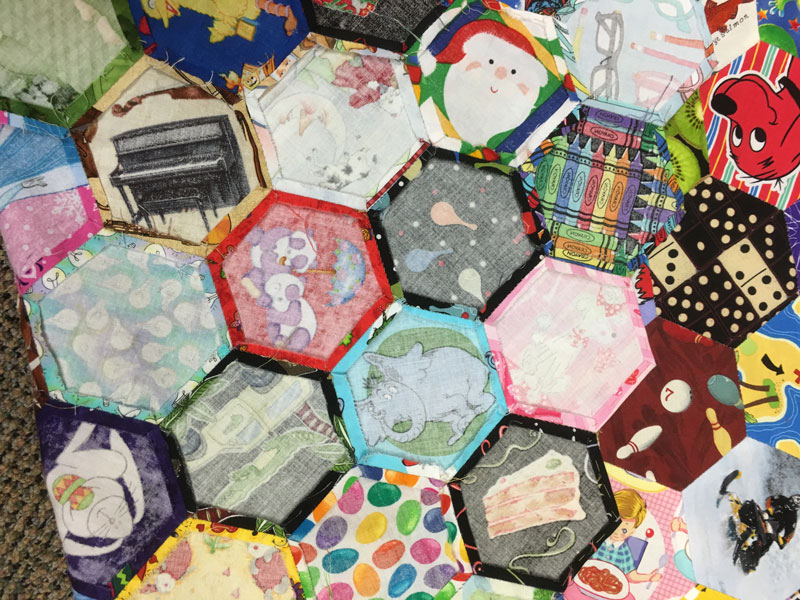


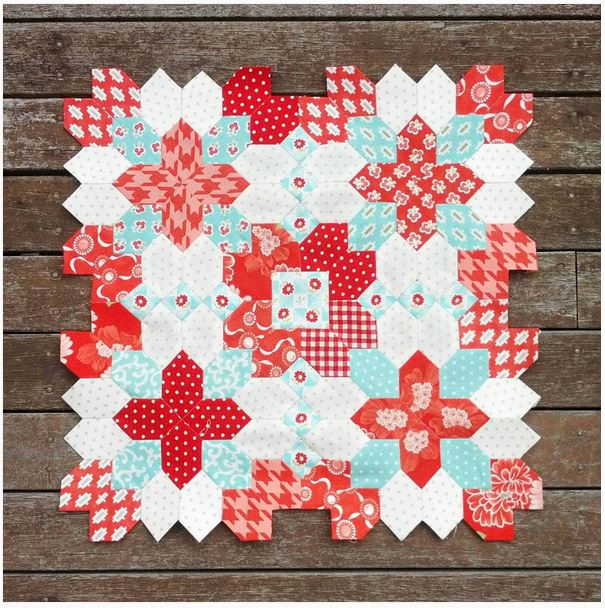

Comments